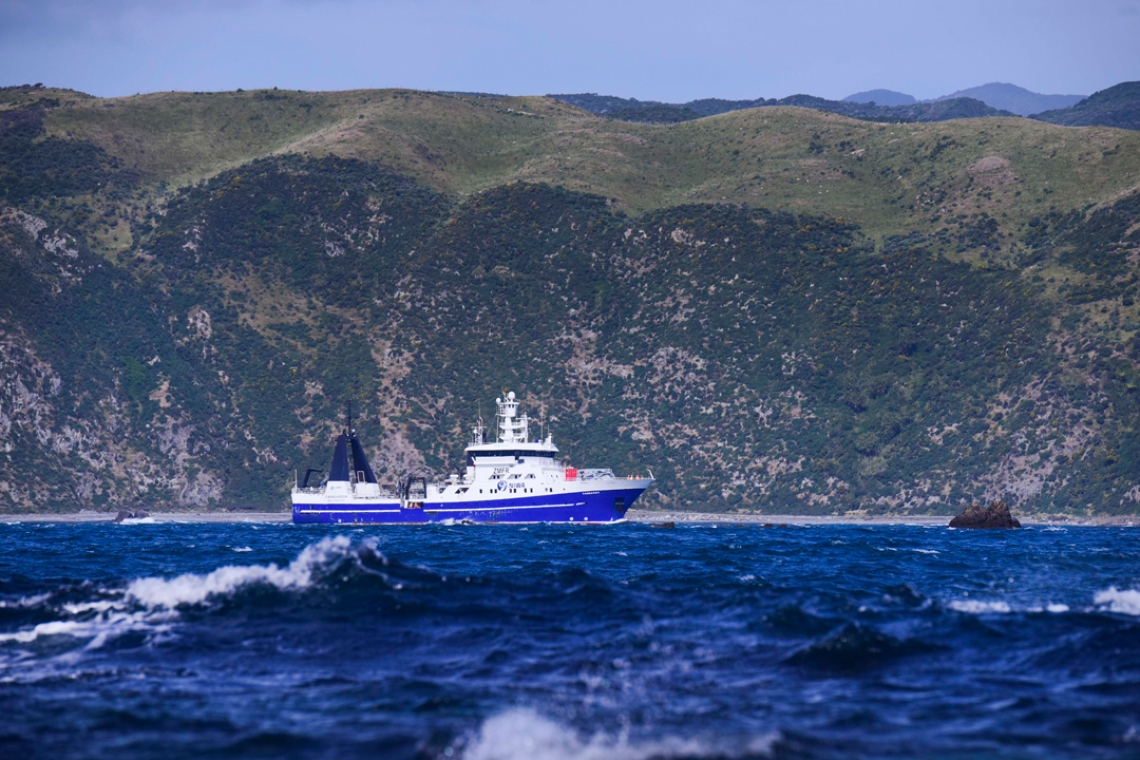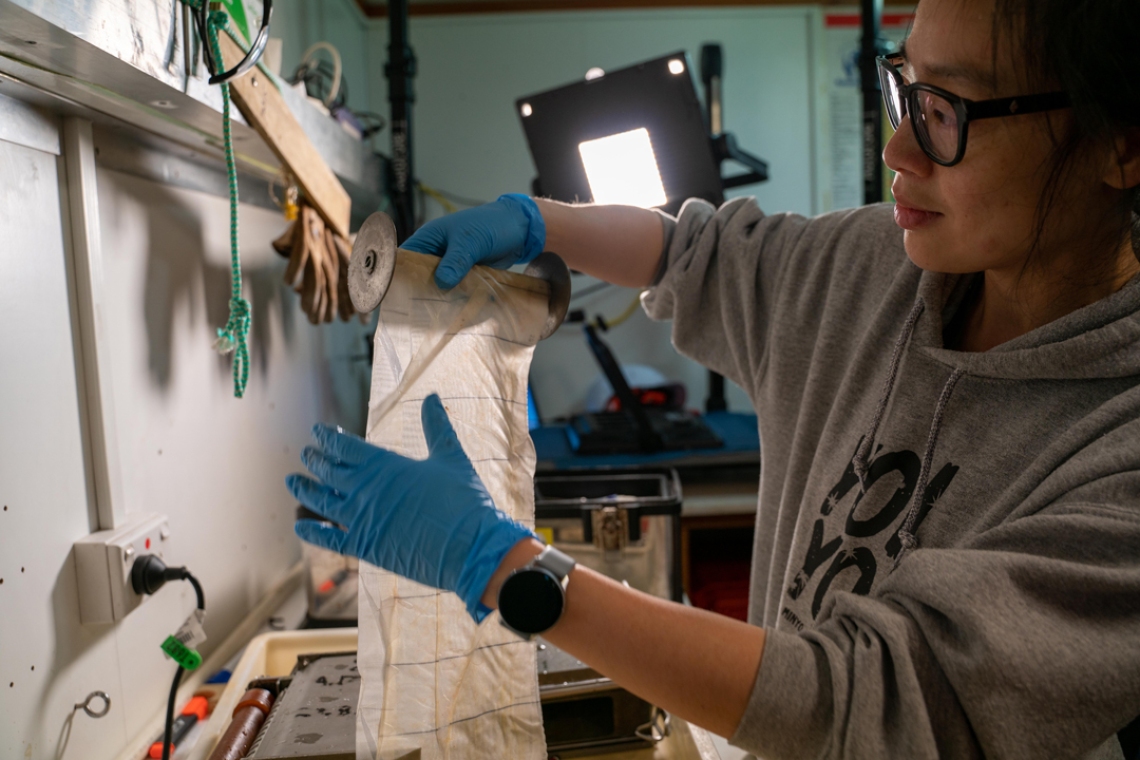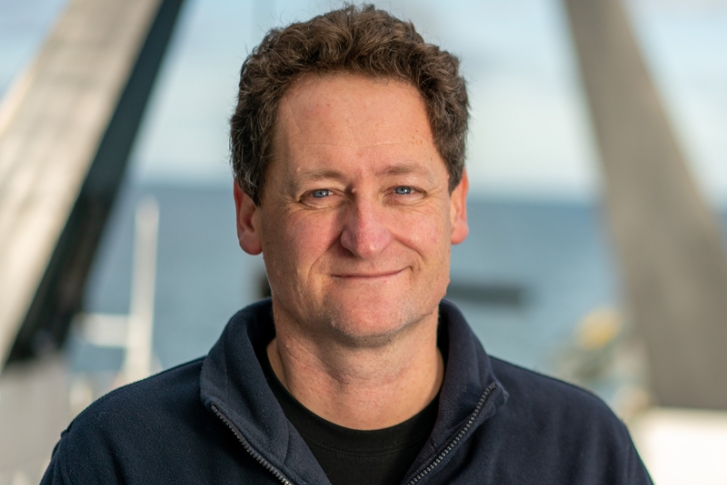Hi all,
We have officially entered Antarctic waters! Five days after leaving Wellington on the Ross Sea Life in a Changing Climate (ReLiCC) 2021 voyage, RV Tangaroa passed 60 degrees south at 5 am NZDT this morning. Our first stop, at the location of a passive acoustic mooring (a.k.a. whale ‘listening post’), is now less than a day away and we are hoping for good weather to retrieve and then re-deploy the moored hydrophone on Saturday.
As well as notifying the Commission for the Conservation of Antarctic Marine Living Resources (CCAMLR) of our arrival in the Antarctic there will be a lunchtime ceremony for the scientists and vessel crew who haven’t sailed this far south before. Details are sworn to secrecy! The doctor onboard is running a sweepstake for predicting the latitude of the first iceberg, so all eyes are on the lookout.
We have had a very good transit south through the Southern Ocean, dodging a series of low-pressure weather systems. Winds have been only moderate (by Southern Ocean standards), but we have had a couple of days of long, lazy 4-5 m swells that have seen a few of the scientists huddled on bean-bags or looking out to the horizon trying not to feel queasy!
The science work on the voyage began as soon as we left Wellington. We are monitoring a suite of onboard instruments that collect data on water properties while underway to help us better interpret satellite images of ocean colour. Ocean colour satellite sensors provide information on the plant- or phytoplankton (not ‘fighter plankton’ as reported by Radio NZ!) in the upper ocean. Understanding seasonal variation, spatial patterns, and long-term trends in oceanic phytoplankton production is an important part of ecosystem monitoring as this underpins the entire marine food-web.
We also have sensors and a 360° camera on the “monkey island” above the Tangaroa bridge to monitor sea surface colour throughout the voyage. NIWA scientist Mark Gall is responsible for the colour sensors and is collecting daily samples of phytoplankton from the underway flow-through system to measure their bio-optical properties and help to “ground truth” the satellite data.
Behind the ship, we are towing a continuous plankton recorder (CPR). This mechanical wonder was designed by one of the fathers of marine biology, Sir Alister Hardy, in the 1920s. Nearly a century later we are towing the same device to study zooplankton across the Southern Ocean. Zooplankton (or animal plankton) are also a key component of marine ecosystems. They are sensitive to changes in the ocean environment, which makes them good indicators of water mass types and ecosystem health. The CPR consists of a capsule containing a gearbox connected to an external propeller, two layers of silk and a preservation tank. It is towed about 100 m behind the vessel at a depth of around 10 m, at our cruising speed of about 20 km/hr. As the CPR moves, water enters a small aperture at the front of the capsule and passes through filtering silk with tiny openings just large enough to collect plankton. The external propeller advances the silk at a rate of about 1 cm per nautical mile (1.85 km), irrespective of the speed of the ship. The filtering silk then gets covered by second silk, and plankton is sandwiched between the two layers. Both silks are then rolled into a storage tank, where the plankton are preserved for later study in a lab. The device can gather samples continuously over a distance of up to about 450 nautical miles (833 km) before the silks need replenishing. And as well as zooplankton, we are now using the CPR to monitor ocean pollution by microplastics. Science in a silk sandwich!
Since passing 55° south, scientists and crew have also been deploying three types of autonomous oceanographic instruments: oceanographic profiling floats as part of the global Argo programme; wave measurement buoys for the New Zealand Defence Force Defence Technology Agency, and meteorological drifters as part of the Global Drifter Programme (GDP).
The Argo programme maintains about 3,500 individual floats worldwide, each of which collects oceanographic information during programmed descents and ascents through the water-column, routinely transmitting data to base stations via satellite. During this voyage, we are contributing to international efforts to maintain global coverage of the oceans, by deploying 15 Argo floats in a region of the Southern Ocean that has limited coverage. All Argo data are freely available in near-real-time. The 10 GDP drifter buoys we have to deploy provide data on atmospheric pressure and sea-surface temperature which will help to improve weather forecasting and detect climate variability. Wave buoys measure ocean waves. Increased understanding of waves in the area can help to improve vessel safety.
We are looking forward to getting into the science programme over the next week. If you wish to track our progress please see https://niwa.co.nz/our-science/voyages/2021_Antarctica which will also have images from the voyage and feature more information on the science. I will send further updates every Friday.
Best wishes,
Richard (Voyage Leader TAN2101)




